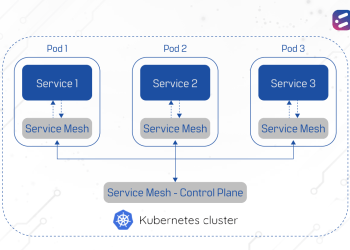Emerging technologies such as containerization, virtualization, and edge computing are driving additional cloud spending, says a Gartner survey, which also reports that 94% of enterprises use the cloud. It also predicts that worldwide end-user spending on public cloud services in 2021 will total $332.3 billion, up from $270 billion in 2020.
But understand that cloud is not a “one-size-fits-all”. And it never will be. Blindly moving legacy apps to the cloud with a “lift and shift” strategy, is not the answer. As an enterprise, you need to evaluate your needs, identify the correct tools, and adopt the most realistic approach to application modernization.
While you can reduce the risk and cost of app redevelopment, there will be some associated upfront and maintenance costs. Which means that calculating your return on investment (ROI) on the redevelopment exercise is very important.
Here is a six-part plan towards effectively measuring ROI on your application modernization project.
1. Modernize with a plan
One of our clients worked with us to update their legacy app – a learning management system. Some of their existing courses were not compatible with compliance and legal requirements. By modernizing their application to support advanced X-API content, they were able to satisfy legal and compliance requirements, and offer new products to end users – creating a new business opportunity, and potential avenues for growth and returns.
In the same project, we also added new functionality in the modernized app, to draw data from a third-party mobile SDK, integrate with service API endpoints, and include compatibility of latest authoring content in the eLMS. By identifying optimal ways to resolve identified pain points, the modernized app is more capable of delivering on its stated goals. This means greater efficiency and utility, ensuring the modernization process delivers value more effectively.
2. Calculate gains
As a result of this redevelopment, new users were on-boarded on the modernized application. Each user is presented with multiple ‘recommended courses’, presenting the opportunity to up-sell and cross-sell other products. By offering discounts on specific value-added products, new users are retained on the platform, further increasing user lifetime value.
The modernized application can now give user level details in terms of usage, popular offers, buying patterns, UX patterns and marketing analytics. This gives the stakeholders various data points that allow them to manage their business more effectively. All of these contribute directly to ROI achieved from the modernization project.
3. Evaluate the measurable impact
The next step is to estimate Customer Lifetime Value (CLV) resulting from the redevelopment. You can do that by calculating how much incremental value the business is likely to earn from new customers acquired as a result of the redevelopment, throughout the time that these customers engage with you. Multiplied by the estimated number of new users, you have your impact, measurable in numbers.
4. Calculate risks
There is a certain risk that the anticipated users of the application may not use the new features. This may be mitigated by, for example, offering discounts to those who avail of those features in order to promote awareness. This is a common practice among application-based businesses, both B2B and B2C, and increases the likelihood of user adoption. This improves the probability that the new features invested into will contribute towards ROI on the redevelopment.
5. (This is the big one) Calculate ROI
The simple way to understand ROI would be – Let’s say, you spend USD 500 a month on a campaign that generates double that in returns, then your ROI is equal to 2 because, for every single dollar spent, the business earned two. That’s just the simple way to do it. You can monitor actual ROI and compare it against projection. For instance, calculate the cost associated with the risk and multiply by the percentage of the risk.
What are the costs? You have Development costs + Annual maintenance costs + Annual infrastructure costs. All these can be calculated based on your agency’s quotation.
Then calculate the expected gain compared to the expected cost (Cost + Risk).

Calculate ROI over a 5 year period at minimum, since large projects do not usually achieve a positive return in the immediate term.
Remember to keep all figures realistic, calculate all impacts (on sales, HR, finance, admin, IT, etc), and always get figures from business owners and department heads, not the IT team.
There is a tendency to be enthusiastic or conservative, so track real vs measured ROI on a monthly or quarterly basis. This method of calculation of ROI will help justify current and future IT spends.
6. Study learnings and insights
After each completed project, examine whether your modernized application has achieved positive ROI. In addition, take subjective feedback from all app users on an ongoing basis. Map to the best-fitting modernization approach and ensure you have a clear understanding of the associated costs and benefits. Analyze learnings from past projects to gain insights for use in future development and redevelopment exercises.
Another way to ensure you achieve positive ROI is by choosing the right cloud service provider to make the modernization process as smooth as possible. You need to find a cloud provider who is invested in your app modernization success. CloudNow uses technology-driven solutions to deliver better value, faster. We have executed more than 450 migrations to date. Contact us if you’d like assistance.













